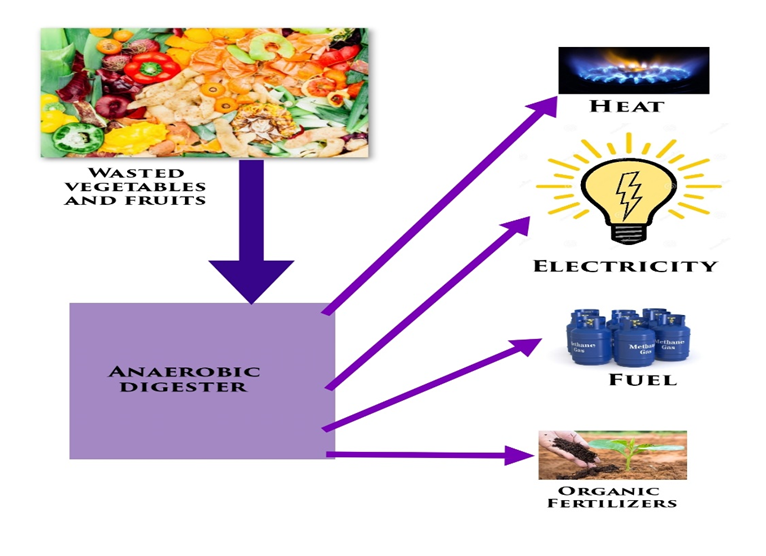Courtesy: Md. Saklain Mostak, Batch-212, Dept. of EEE, Green University of Bangladesh.
We are noticing globally that the fuel crisis is intensifying day by day. In such a situation, it is assumed that the amount of fossil fuel will decrease significantly in the next few decades. In this situation, scientists around the world are trying to find new sources of energy.
In this circumstance, generating electricity
through biogas from rotting vegetables and fruits can be an effective technology.
According to a survey by FAO, global food waste
is estimated at 1.6 billion tons, whereas the rate of fruit and vegetable waste
ranges from 17 to 32 percent.
Like in the rest of the world, vegetables and fruits rot at a significant rate every year in Bangladesh. Vegetables and fruits are spoiled step by step. Some vegetables and fruits are wasted during the time farmers harvest and sort them until they are marketed. Again, unsold vegetables and fruits in the market are wasted. When we cut those for eating, some of the leftovers get wasted. By collecting these wasted vegetables and fruits, we can use them to generate electricity.
So how can it be produced?
Leftover vegetables and fruits have to be collected
from different places.
Then they have to be cut into small pieces with
the help of a machine. The material is then ground into an anaerobic digester,
where it turns into a soupy liquid. Bacteria convert the waste to volatile
fatty acids, and a second set of bacteria convert those fatty acids to methane.
The methane bubbles up through the liquid waste and is collected at the top of
the digester, where it’s fed to an internal combustion engine that runs a
generator to produce electricity.
The electricity generated from this can be used in local power plants as well as, on a large scale, it can be added to the national grid. The produced biogas will never replace natural gas. There isn't enough waste to meet electricity demand. But it does something natural gas can't. So, if the right initiative is taken, this project can bring some benefits to the electricity sector of our country.
Methane gas obtained from this project can be
used not only for power generation but also for cooking with this gas. Besides,
the waste material that can be obtained from here can also be used as organic
fertilizer for crop production. We are notified that organic fertilizer is very
useful for agriculture.
This project has already been implemented in
different countries in the world. One such biogas plant has been established in
Hyderabad, India, which is contributing to meeting the electricity demand
there. The scope of this project worldwide is increasing day by day.
So now, considering the electricity demand of
our country, steps can be taken to implement this project. Such projects can be
started on a small scale, and later on, if successful, can be scaled up.
Through this, city dwellers can be protected from the stench of rotten
vegetables and fruits, and new possibilities will be opened by increasing gas
production, which will help to increase the electricity generation rate of our
country.






0 Comments